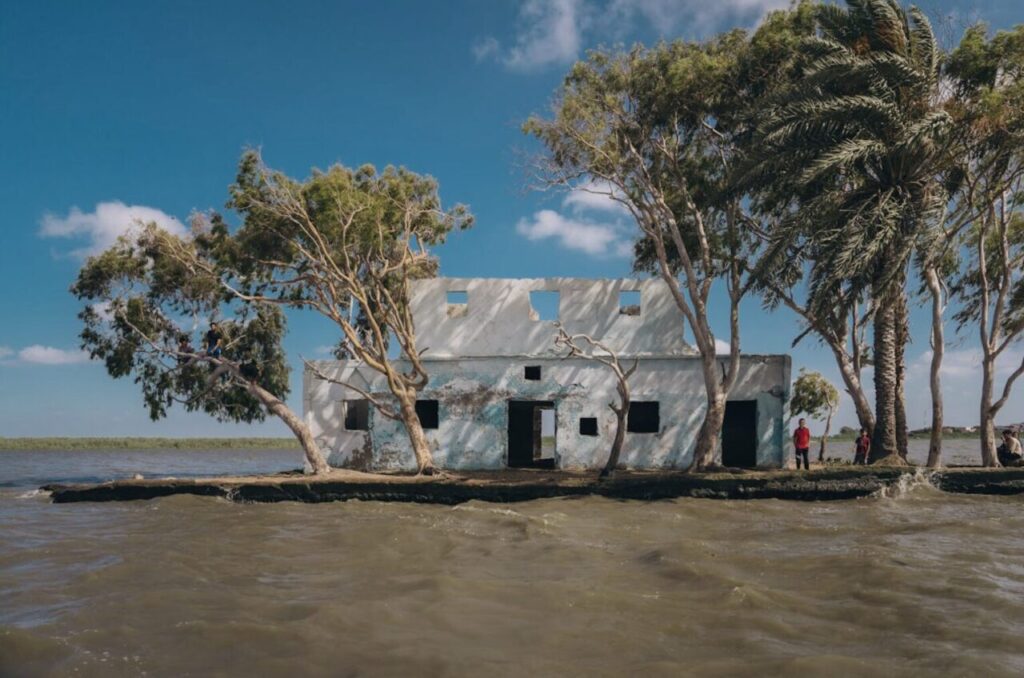Water infiltration into your home can be insidious.
You see a tiny little stain on your ceiling, make a mental note to investigate its source, then promptly forget about it for weeks.
Then, seemingly out of nowhere, you’re looking at crumbling drywall, mold spores, and a big repair bill that will leave your home in shambles for longer than you’d like!
Water…Life Giver…Deceiver!
An iceberg should be the image that comes to mind when considering the nature of water damage. That little spot you see? Well, it’s often a tiny piece of the problem that is waiting to pounce!
It can start innocently enough…maybe it’s a leaky pipe, or you’re dealing with some seepage after days of heavy rain.
Even humidity can cause issues if the water vapor doesn’t dry quickly enough. But rest assured, water is patient, persistent, and incredibly destructive when left unchecked.
Promptness Pays Off…Big!
So why do we wait to deal with it? Well, we’re busy, and because it looks like a small problem, we put it off until that one day it comes roaring into our lives, insisting that we pay attention to it!
Water damage doesn’t care that your kids’ soccer team is competing for the championship…it works silently in the background, day after day, until it can’t be ignored.
But more than damaging your home, its playmates (e.g., mold) can lead to havoc with your health.
First at bat: mold. All it takes is 24 to 48 hours for the mold to begin growing, releasing its spores into the air and causing damage to your home and your health.
Anyone with allergies, asthma, or other breathing difficulties can be impacted by these nasties…even healthy people.
In addition to mold, stagnant water plays host to bacteria, creating a toxic environment right under your nose.
Structure Damage
But more than your health is at risk when dealing with water damage.
Your home could be rotting out from underneath you!
Water is a pro at finding the weakest point of entry (or exit) in your home’s building materials.
Wood? Yeah, it not only warps, it rots. And drywall crumbles like your Aunt Midge’s peanut butter cookies!
Depending on the severity of the water issue, it can even compromise your home’s foundation.
Electrical Hazards
And don’t forget your home’s electrical system. Water and electricity are not best friends. When combined, they can lead to short circuits or even fires.
Got Insurance?
You pay those premiums year in and year out. Surely they’ll cover the damages, right? Maybe…but maybe not.
If your insurance company smells any hint that the claim you’ve submitted is the result of long-term neglect, they might say, “Nope…you’ve voided part of your coverage.”
But, even if they do pay, the longer you wait to deal with the issue, the more extensive the damage becomes, potentially increasing those rates we talked about…
Why It’s Important to Be Quick
If you had tackled that small leak when you first spotted it, it might have cost less than your deductible, so you wouldn’t have had to hassle with filing an insurance claim.
But wait a few months? You could be dealing with the hassle of filing a claim, getting quotes for the repair job, dealing with the loss of using your space, and breathing in not-so-clean air until the issue is resolved.
And who’s got time for that?
Collateral Damage
Water damage doesn’t stay put. It affects not only where the damage is, but it can expand to other areas of your home, impacting your furniture, personal belongings, and electrical and HVAC systems. Before long, you’re undertaking a renovation project—only without the fun of picking out colors and textures!
However, there is good news. Taking immediate action can stop water damage in its tracks before it can wreak havoc on major portions of your home.
When you do this, you’ll save money and your sanity.
Time is NOT on your side
So, now that we’ve discussed the negative impacts that water damage can have on your home, what should you do first when telltale signs present themselves?
When you notice signs of water damage, the first step is to turn off the water source, if possible. Then, clear the area of anything that could be damaged and begin drying it out, using fans and open windows. This will prevent mold from forming (or stop its growth if it’s already started). If you’re not a DIYer, or if the problem is beyond your skillset, call in a professional, especially when it comes to thorough drying and mold remediation.
If you’re not a DIYer, or if the problem is beyond your skillset, don’t hesitate to call in a professional. Their expertise, especially in thorough drying and mold remediation, can make a significant difference. You can rest assured that you’re in good hands.
Finally, remember to document everything. Take photos, keep receipts, and note down your mitigation efforts. This organized approach will streamline the insurance claim process if you decide to file one. You’re prepared for any eventuality.
8 Steps to Safeguard Your Home Against Water Damage


